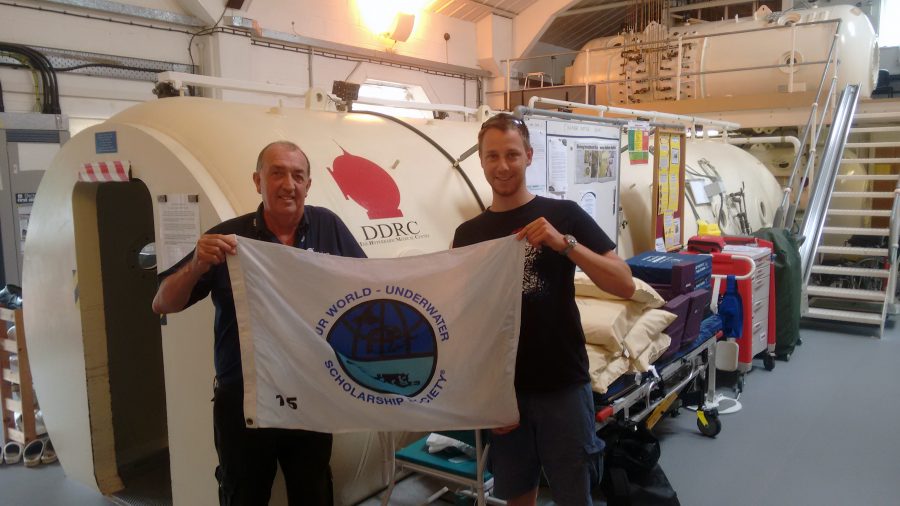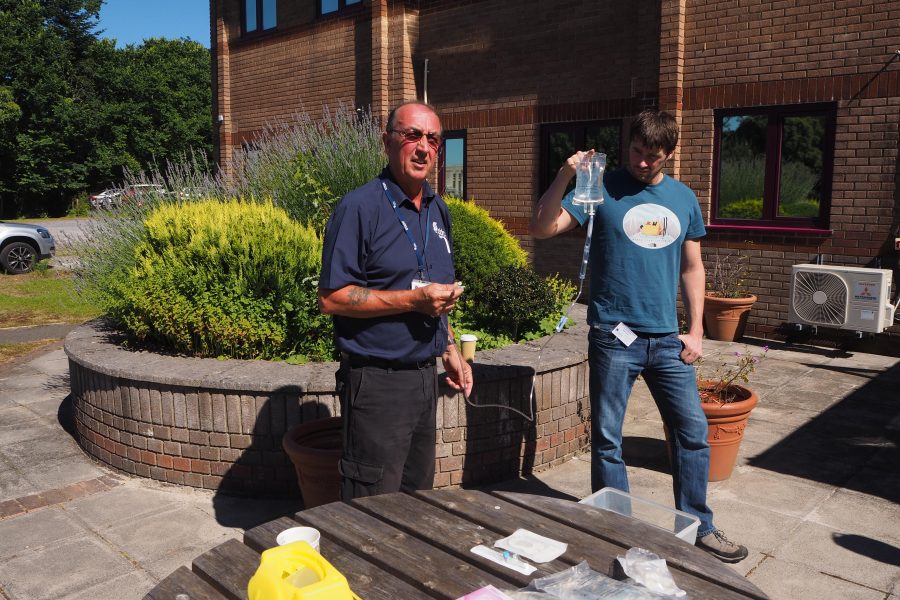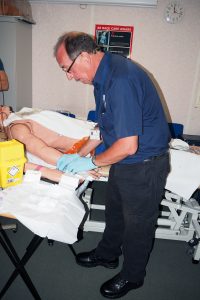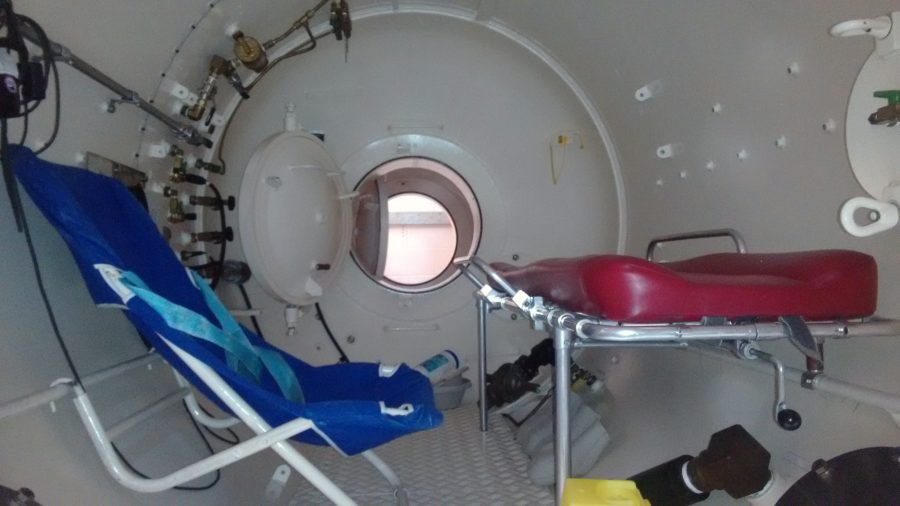As I set out on my next adventure, I find myself on a train to London with some time to reflect on my latest scholarship experience. Last month, I completed the IMCA Diver Medic Technician (DMT) course with the Diving Disease Research Centre (DDRC) in Plymouth. The International Maritime and Coastal Agency (IMCA) originally developed this course to assure that saturation divers have the necessary skills to respond to an accident and care for their dive buddies. This is particularly important as they spend up to 28 days in a chamber and may take as long as a week to decompress to surface pressure. However, the skills thought in the DMT course are relevant to any diver who is more than an hour from medical care. Chamber attendants for hyperbaric oxygenation treatments at the DDRC and many other medical facilities across the world hold this certificate. On top of my general interest for diving emergency response, I was really looking forward to this course because it will help me to plan and carry out diving expeditions safely in future. The DDRC Professional Services team delivers this course in a small classroom atmosphere with numerous hands-on break-out sessions to train all participants in every skill.

The two-week diver medic technician course lived up to all my expectations. The first three days focused on practicing first aid and secondary care. We learned about oxygen administration and the use of automated external defibrillators (AEDs), and practiced with them as part of interactive emergency scenarios. On top of that, I learned several advanced techniques to help patients under indirect supervision of a doctor. By the end of the first week, we had learned and practiced how to suture wounds and administer intramuscular injections.


At the beginning of the second week, we learned how to set up a drip and insert a cannula into a vein for intravenous fluids. We got to practice extensive airway management with laryngeal masks, i-gels and other instruments. Catheterization was one of the less glamorous but equally important and possibly most relieving techniques taught in the course.
Two of the DDRC’s hyperbaric physician shared their insights into decompression sickness (DCS), including arterial gas embolism, symptoms of decompression illness and lung over-expansion injuries. While I always find the theory of DCS sobering, practising neuro-checks helped me understand how to best assess casualties. We learned how to decompress lungs and set up a lung drain to relieve pressure for divers suffering from a tension-pneumothorax.
The last two afternoons were spent on scenarios that involved several of the skills and also required us to work in a team, communicate effectively and deal with some additional pressure. While I hope I won’t have to use any of these skills in a real emergency, I now feel a lot more confident to assist in diving accidents.

I thoroughly enjoyed all aspects of the course as the balance of theoretical and practical elements kept it interesting throughout the two weeks. As well as teaching professional healthcare and emergency response courses, the DDRC runs up to three recompression chambers to treat patients suffering from DCI, carbon monoxide poisoning, tissue damage or wound-healing issues. The DDRC excels at helping divers and patients with hyperbaric treatments as well as teaching life-saving skills to interested individuals. I am incredibly grateful for the knowledge and experience they have shared with me over the past two weeks. Now more than ever, I am convinced of the need for training divers in emergency response, oxygen administration and secondary care. Assisting fellow divers in need can lead to an early recognition of DCI and save lives. While avoiding an incident is always the ideal scenario, the DMT course has certainly made me more alert of potential hazards and given me a toolkit to respond if everything goes wrong.